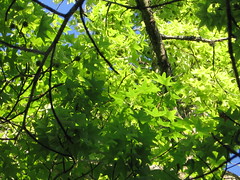Because the world is the free, unnecessary, artistic creation of God (for the display of his beauty and glory), when we study the world and how it works (science) we are analyzing and exploring art. We are finding connections between different parts of the art-work that are not visible at first glance.
Because we can immediately see how beautiful, diverse and unified his work of art is, we know that if we look for symbols; search for meaning; and ask how it all holds together, we will find answers to these questions.
It is the beauty of the stars and cells that compel us to invent the telescope and microscope.
It is the wonderful coherence, the fitting-togetherness of creation that leads, attracts beckons scientists like Einstein to discover (to uncover more beauty) theories of unification.
It is because Kepler knew and heard the beautiful music of the spheres that he was able to scribble down a few bars in his descriptions of the motions of the planets.
The history of science is the story of the uncovering of the glory and beauty of God in his art of creation.
It is because the world is beautiful and that it fits together as a whole that we know things like mass and energy or gravity and electro-magnetism will ultimately make sense together. In it's diversity we will find unity.
And we know that from that sublime unity of natural laws will come the infinite diversity of physical forms in snowflakes, leaves, trees or galaxies.
This is in part inspired by this passage by David Bently Hart in
The Beauty of the Infinite:
“...our knowledge is first of all worship, thanks, awe, and desire before it is rational reflection: to know the world truly is achieved not through a positivistic reconstruction of its sufficient reason, but through an openness before glory, a willingness to orient one’s will toward the light of being, and to receive the world as a gift, in response to which the most fully adequate discourse of truth is worship, prayer, and rejoicing. Or, the truth of being is poetic before it is rational, indeed is rational precisely as a result of its supreme poetic coherence and richness of detail.”
Peter Leithart has several posts about that book (with quotes and summeries) here.








